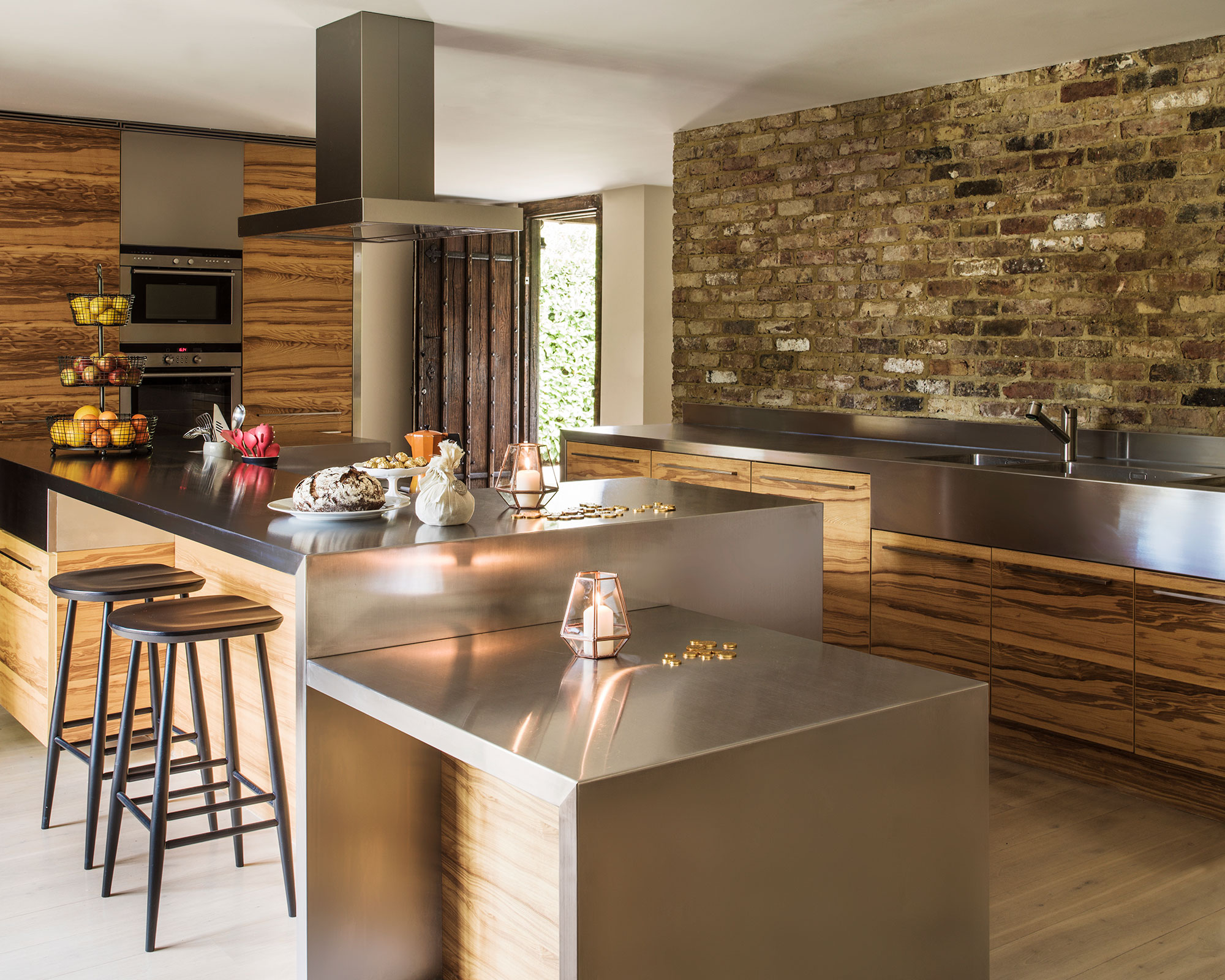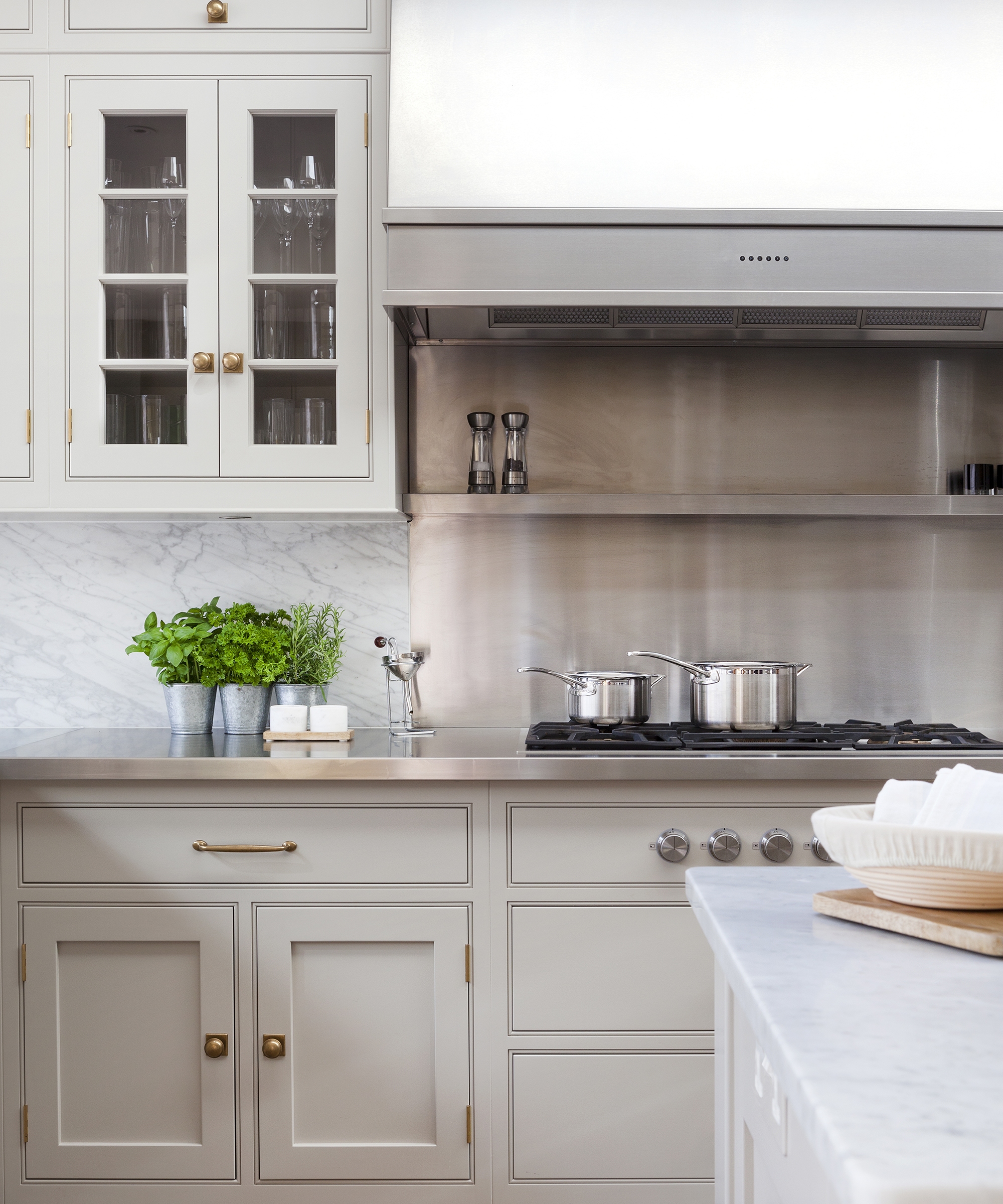How to remove rust from stainless steel – a simple guide using kitchen staples
Keep your kitchen kit looking good as new with our expert advice on how to remove rust from stainless steel


Wondering how to remove rust from stainless steel for the best results? It is one of the most popular finishes for kitchen appliances, surfaces and backsplashes, but fingerprints and smears can accumulate as you use stainless steel appliances and compromise the pristine finish, making effective and easy solutions as part of the routine for cleaning stainless steel appliances a must.
Here, we take a look at the cleaning tips and remedies to rust on stainless steel and reveal the tactics the experts use to keep it looking clean and shiny.
How to remove rust from stainless steel
Often used to produce a range of household and industrial appliances and surface, stainless steel, an alloy of iron that contains ten percent chromium, is a resilient material.
The beauty of stainless steel, often used in chef's kitchens, is its resistance to rust and tarnish due to the chromium film on its surface. However, if this chromium film is removed, the utensil or appliance will begin to rust.
When the time comes to clean a kitchen, stainless steel pots and pans are easily maintained, so they always look attractive, but corrosion can sometimes be also be caused by changes in atmospheric conditions. In the event that your stainless steel utensils and appliances do have rust on them, follow these instructions to remove rust from stainless steel with relative ease.

What is the best way to remove rust from steel?
The answer to how to remove rust from stainless steel is that you can do it with store-bought products, or with what you already have at home.
‘There are many brilliant and cost-effective specialist stainless steel rust removers on the market which are great for making your appliances rust and streak-free again,’ says Lucy Searle, global editor-in-chief of Homes & Gardens. 'But there could also be pantry staples that may already lurking in your kitchen cupboards.'
Design expertise in your inbox – from inspiring decorating ideas and beautiful celebrity homes to practical gardening advice and shopping round-ups.
This simple solution is one of our favorite tried-and-tested methods for removing rust from stainless steel.
1. Create a solution using pantry staples
Before you begin cleaning rust from stainless, always check the manufacturer’s cleaning instructions. Not all steel finishes are the same.
Mix 1 tablespoon of baking soda in 2 cups of water. Baking soda is wonderful non-abrasive way to remove rust and various other stains and blemishes from surfaces and appliances.
2. Use the solution to remove rust
Start by wiping away any smudges with a clean cloth – you may need to use a little bit of elbow grease. Alternatively, rub the baking soda solution on the rust stain using a toothbrush. Baking soda is non-abrasive and will gently lift the rust stain from the stainless steel. It also will not damage the grain of the stainless steel.
3. Rinse and wipe away
Rinse and wipe the spot with wet paper towel. You will see the rust on the paper towel.

Does white vinegar remove rust from stainless steel?
Skip the store-bought stainless steel cleaners and grab a bottle of vinegar from your pantry instead. White vinegar is another household pantry staple that can be used to remove rust from stainless steel. Vinegar contains acetic acid, which works as a mild corrosive cleaner to chip away at rust, dirt and stains.
Fill a spray bottle with undiluted white vinegar. Using a soft cleaning cloth or paper towel, wipe the vinegar on the surface until it’s dry. Rinse with water. However, be aware that this won't work on stubborn rust.
What is the fastest way to remove rust from metal?
Baking soda is one of the best ways to clean a kitchen due to its reliable cleaning power. Thanks to its mild abrasiveness and cleaning abilities, baking soda is also a wonderful option for cleaning laundry, tile grout and grills.
What to avoid when removing rust from stainless steel?
While it is important to know what to use, it is also crucial that we highlight what you must avoid when removing rust from stainless steel as well. Using the wrong cleaning products can often result in long-lasting damage that will be simply irreparable.
Never use a metal abrasive, such as steel wool or brushed to clean stainless steel. These abrasive cleaners may scratch the surface, thus exposing your appliance or surface to even more rust.
We also recommend staying away from cleaners that contain fluorine, iodine, bromine, or any other chloride. Chlorides are far too abrasive and will often lead to dull discolorations on your stainless steel that can corrode and rust.

Jennifer is the Digital Editor at Homes & Gardens, bringing years of interiors experience across the US and UK. She has worked with leading publications, blending expertise in PR, marketing, social media, commercial strategy, and e-commerce. Jennifer has covered every corner of the home – curating projects from top interior designers, sourcing celebrity properties, reviewing appliances, and delivering timely news. Now, she channels her digital skills into shaping the world’s leading interiors website.